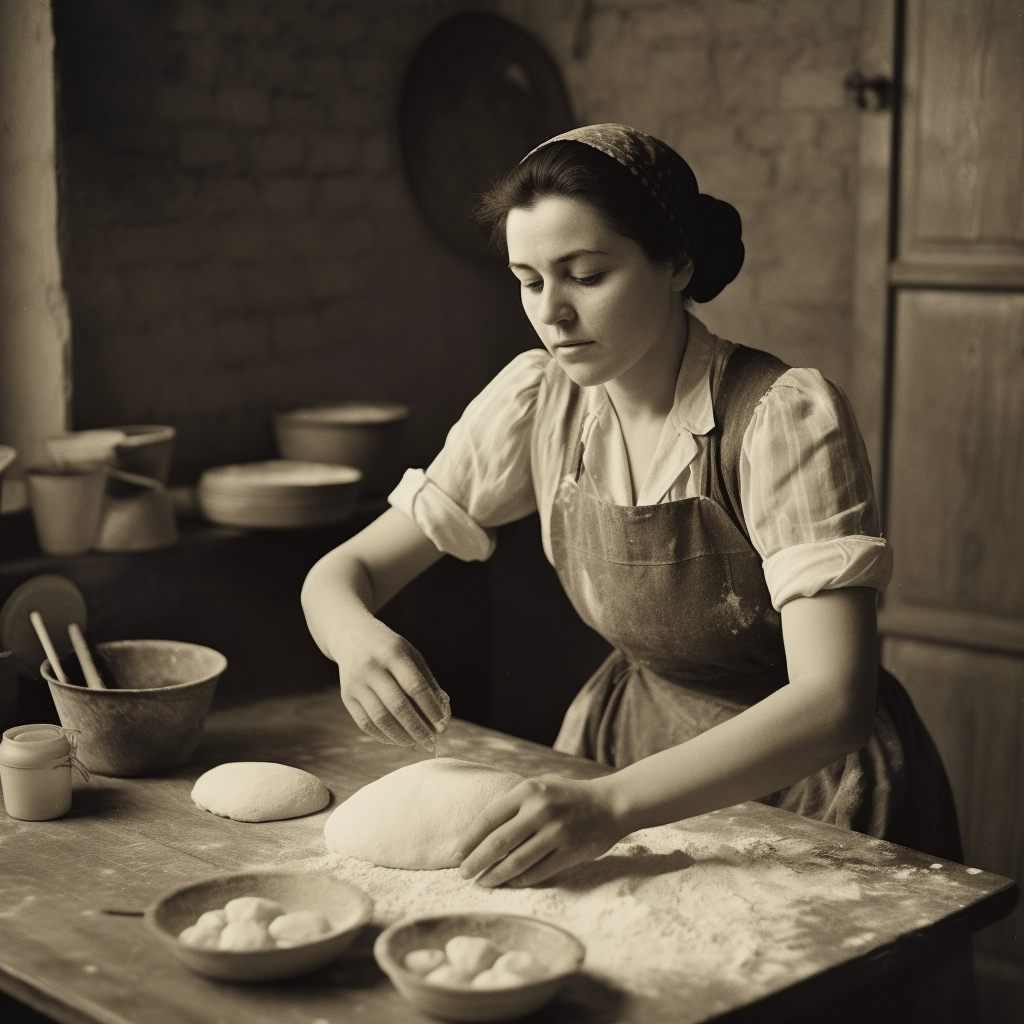
Baking bread is not just a simple act, but a true art form that has united people for centuries, giving them a sense of pleasure and satisfaction.
In this article, we delve deep into the fascinating world of bread baking and explore the secrets and intricacies that make this craft so unique.
Whether you’re an experienced baker or just starting out with bread baking, you’ll find valuable information to help you hone your skills and create delicious breads.
In a world where supermarkets are filled with industrially produced bread, you may wonder why it’s worth investing the time and effort to bake your own bread.
The answer is simple: homemade bread offers a multitude of benefits.
Before we dive deeper into the different bread types and techniques, it’s important to understand the basic steps of bread baking.
Here are the essential steps to baking a simple but delicious bread:
Gather all the ingredients you need, including flour, water, yeast or sourdough, salt and any additional ingredients such as seeds or spices.
Make sure you choose high-quality ingredients to achieve the best result.
The right dough consistency is crucial for a successful loaf.
Pour the flour into a large bowl and make a well in the center.
Add salt and water after the yeast or sourdough.
Begin to mix the ingredients gently until a rough dough forms.
Now it’s time to use your hands.
Knead the dough on a lightly floured work surface for about 10-15 minutes until it becomes smooth and elastic.
Feel the changes in your hand as the dough comes to life under your fingers.
This step requires some patience, but it is a wonderful way to connect with the bread you are creating.
Once the dough has been kneaded, it is time to give it a rest.
Put the dough back in the bowl and cover it with a damp cloth.
Let it rest and rise in a warm place to allow the flavors to develop and the dough to build up its structure.
Something magical happens at this stage – the dough doubles in size and the yeast or sourdough creates a wonderful fermentation that gives the bread its characteristic flavor and texture.
Once the dough has had its resting time and has risen nicely, it is time to give it a shape.
Take the dough out of the bowl and place it on a floured surface.
Knead it briefly to remove any air bubbles.
Now you can let your creativity run wild and shape the dough into a loaf, baguette or other shape of your choice.
Remember that the shape should not only be aesthetically pleasing, but can also affect the baking time.
Once the dough is formed, place it on a baking tray or in a bread tin and let it rest again while you preheat the oven to the right temperature.
When the dough has risen a little again, it’s time to put it in the hot oven and succumb to the delicious smell of baking.
While the bread bakes in the oven, your home will be filled with a wonderful warmth and anticipation of the results to come.
Once the bread has developed a golden brown crust and your home is filled with its beguiling aroma, the moment of reward has arrived.
Carefully remove the bread from the oven and leave it to cool on a wire rack.
This moment of waiting may make you impatient, but it’s part of the ritual.
When the bread has finally cooled, you can cut it and take your first bite.
Close your eyes and let the taste of freshly baked bread melt in your mouth.
It is a moment of fulfillment and pride, because you have created this bread with your own hands.
You can fully enjoy the aroma, taste and texture, knowing that this bread was baked specifically to your preferences and needs.
Baking bread is not just a simple act of preparing food, but a true art of living.
It requires attention, patience and dedication.
Bread baking combines tradition and creativity, craftsmanship and passion.
It is a way of expressing yourself and bringing joy to others.
In our hectic modern world, baking bread can offer a valuable time-out.
It is a moment to escape the daily grind and focus on the essentials.
Kneading the dough can be calming and meditative, while the aroma of baking invigorates the senses and creates a cozy atmosphere.
Baking bread can be a ritual of self-care and wellbeing, connecting us to our roots and giving us a moment of mindfulness.
The world of bread baking is limitless and offers a wealth of possibilities.
There are countless types of bread from different countries and regions, each with its own history and special characteristics.
From crusty baguettes and moist rye breads to exotic spiced breads, there is a bread to suit every taste and preference.
You can also use your creativity and try out new recipes and variations.
Add herbs, nuts, dried fruit or spices to your bread doughs to create interesting flavor combinations.
Experiment with different types of flour and grains to vary the texture and taste.
Bread baking offers endless possibilities to unleash your culinary imagination.
Bread baking is an art form that appeals to both the baker and the connoisseur in us.
It offers the opportunity to express yourself with high-quality ingredients, develop your individual taste and experience a piece of traditional craftsmanship.
Home-baked bread not only enriches our palate, but also our soul.
It creates connections, gives us moments of joy and lets us forget everyday life for a moment.
As you enter the world of bread baking, you will gain more experience and confidence with every loaf you bake.
Start with simple recipes and work your way up step by step.
Take your time to learn the art of bread baking.
Address:
Gasteigweg 25,
5400 Hallein
Austria
Opening hours:
Monday to Thursday: 09 – 16:00
Friday: 09 – 12:00
Contact:
Phone: +43 6245 83282
E-mail: info@agrisan.at
Address:
Gasteigweg 25,
5400 Hallein
Austria
Opening hours:
Monday to Thursday: 09 – 16:00
Friday: 09 – 12:00
Contact:
Phone: +43 6245 83282
E-mail: info@agrisan.at

